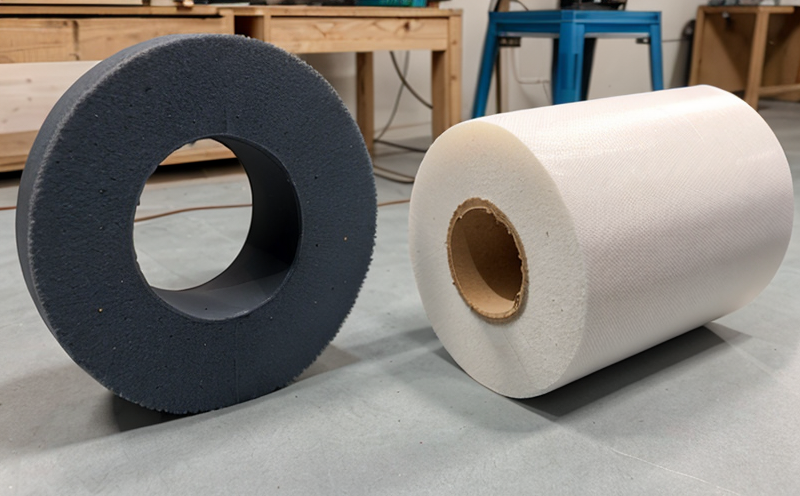ISO 1133 Melt Flow Rate Testing of Plastic Materials in Furniture Components
The ISO 1133 standard is widely recognized as a robust method for determining the melt flow rate (MFR) of thermoplastics. This property provides critical insights into the processing characteristics and potential performance of plastic materials used in furniture components. Understanding MFR helps quality managers, compliance officers, R&D engineers, and procurement teams ensure that the chosen materials meet both functional and regulatory requirements.
For furniture manufacturers, selecting appropriate plastics is crucial for durability, comfort, and aesthetic appeal. The melt flow rate directly influences how easily plastic can be extruded or injection molded into various parts of a piece of furniture. A higher MFR indicates easier processing but may come at the cost of lower viscosity during production, which could affect strength and other mechanical properties.
In this service, we conduct ISO 1133 tests on thermoplastics used in furniture components to assess their melt flow behavior under controlled conditions. This testing ensures that suppliers meet stringent quality standards and helps manufacturers optimize material selection for specific applications within the furniture industry.
The test involves heating a specified weight of plastic sample in a die, applying pressure, and measuring the mass of extruded polymer during a fixed time period. The result is reported as grams per 10 minutes (g/10 min), providing valuable data about the material's processability.
By understanding these properties early in the design phase, furniture manufacturers can make informed decisions regarding which materials to use for different parts of their products. This knowledge also aids in troubleshooting issues during production or identifying potential improvements in future product iterations.
Our experienced team follows all necessary precautions and adheres strictly to ISO 1133 guidelines to ensure accurate results every time. We provide detailed reports that include raw data, calculated MFR values, and recommendations for optimizing material use based on the test outcomes.
Scope and Methodology
| Test Parameters | Description |
|---|---|
| Temperature Range | The test is conducted at 190°C ± 1°C for most thermoplastics. |
| Weighing Equipment Accuracy | Ensures precise measurement of the sample mass used during extrusion. |
| Die Size Selection | Determined based on the size and type of the plastic component being tested. |
| Standardized Extruder | A calibrated extruder is used to apply consistent pressure across all samples. |
The methodology involves carefully preparing the test specimen, loading it into a standardized die within an extrusion machine set at the specified temperature. A known weight of material is then forced through this die under constant pressure over a fixed period (typically 10 minutes). The mass of plastic that passes through during this time determines its melt flow rate.
This process provides consistent, repeatable results which are crucial for quality control purposes and compliance with industry standards. By following these stringent procedures, we can ensure accurate measurement of the MFR value for each sample tested.
Benefits
Evaluates the processability of thermoplastics used in furniture components.
Aids in optimizing material selection by providing insights into potential challenges during manufacturing processes.
Ensures adherence to relevant international standards like ISO 1133, enhancing product quality and reliability.
Promotes better decision-making at various stages of the furniture design and development cycle.
The ability to predict how easily a plastic will flow during processing helps manufacturers anticipate any difficulties they might encounter when working with certain materials. For instance, if a particular grade of plastic has an unusually low MFR value, it may require more careful handling or could pose challenges during injection molding.
Additionally, knowing the exact melt flow rate allows for better integration of recycled plastics into new products without sacrificing performance standards. This aligns with sustainability goals while maintaining high-quality manufacturing practices.
Quality and Reliability Assurance
Strict adherence to ISO 1133 methodology ensures consistent, accurate results.
Calibrated equipment guarantees precise measurements throughout the testing process.
Regular calibration of instruments maintains reliability over time.
Use of standardized dies and extruders minimizes variability between tests.
Training for personnel involved in testing ensures consistent application of techniques.
Our commitment to quality extends beyond just conducting the test; it includes ensuring that all equipment is properly maintained, regularly calibrated, and operated by trained technicians. This approach guarantees that every result we provide meets the highest standards of accuracy and reliability.
We follow strict protocols for sample preparation, ensuring that each specimen represents the material accurately. Proper handling during testing further reduces variability in results, allowing us to deliver consistent outcomes time after time.





